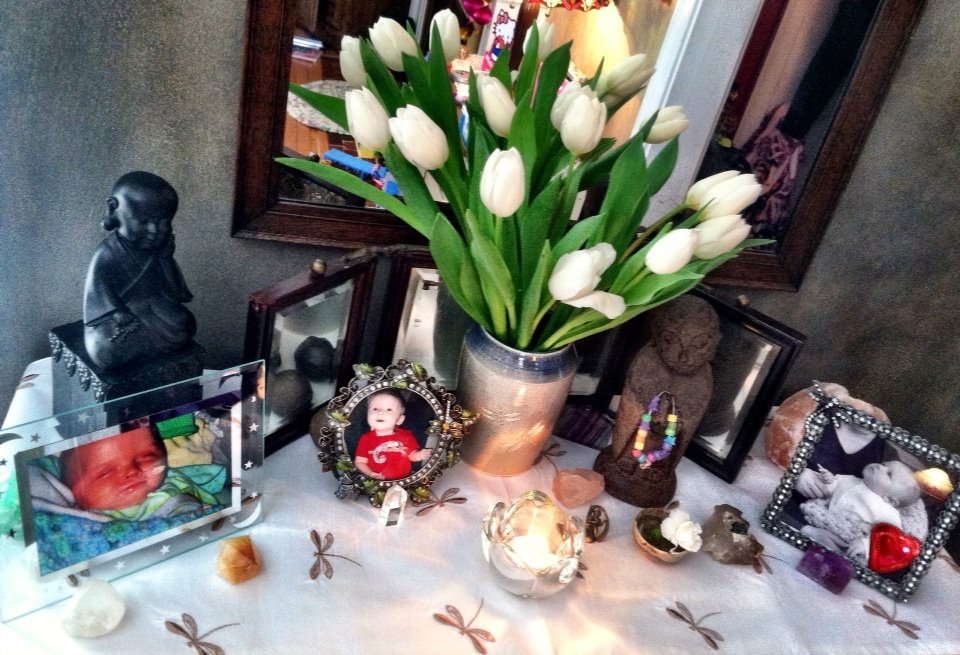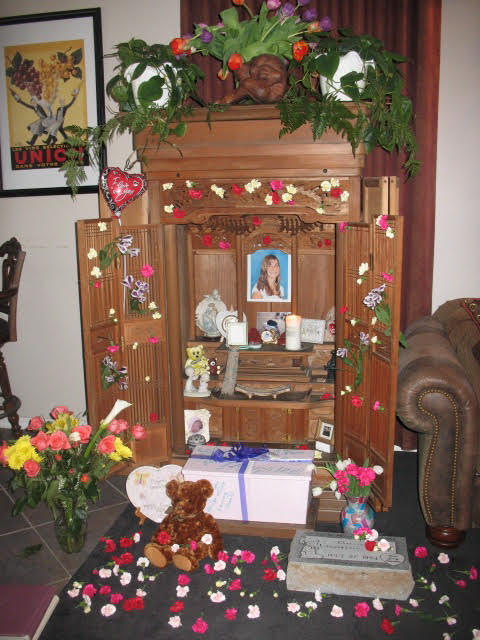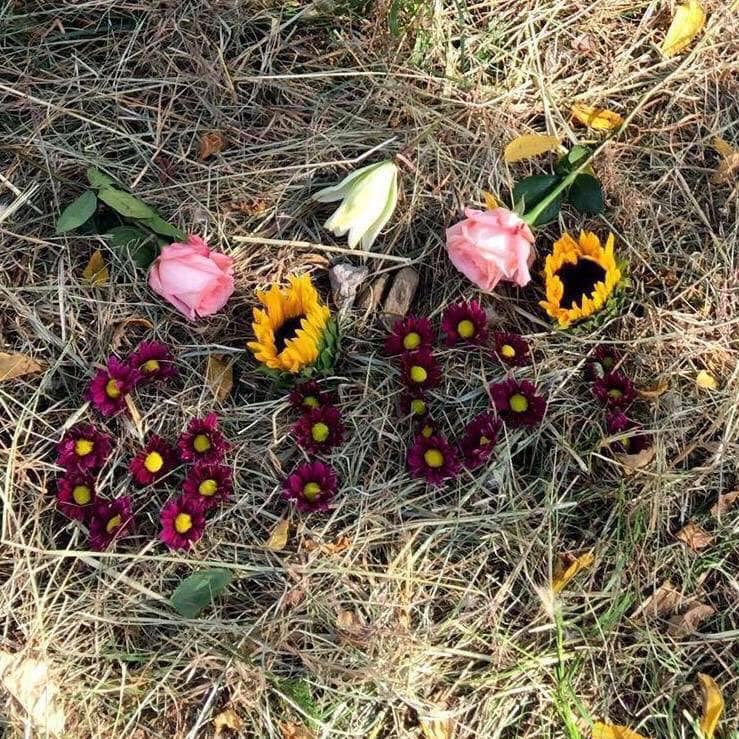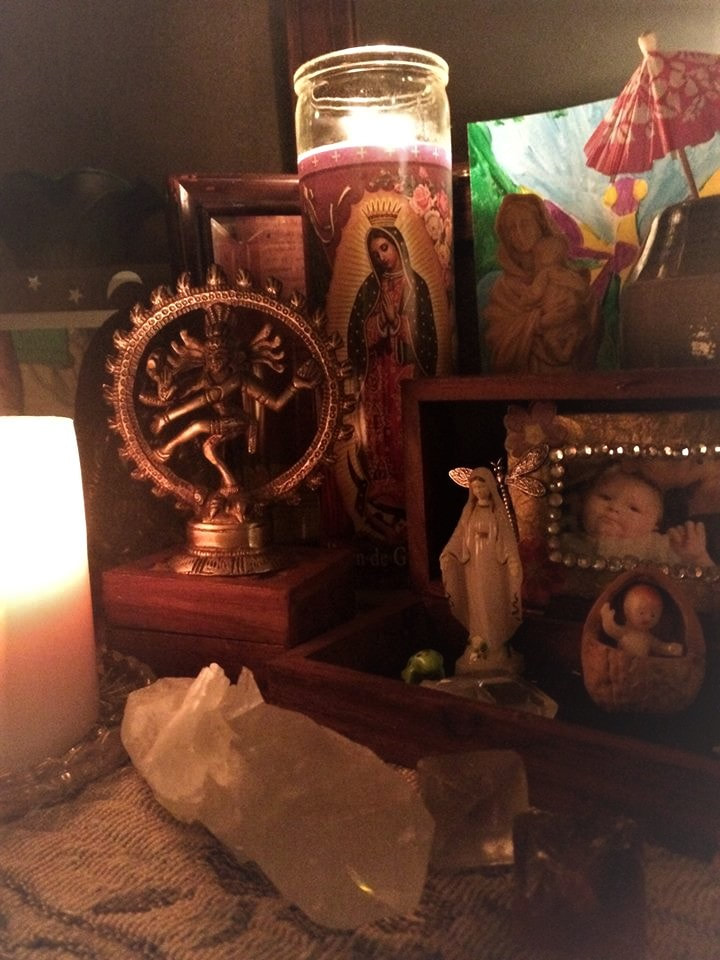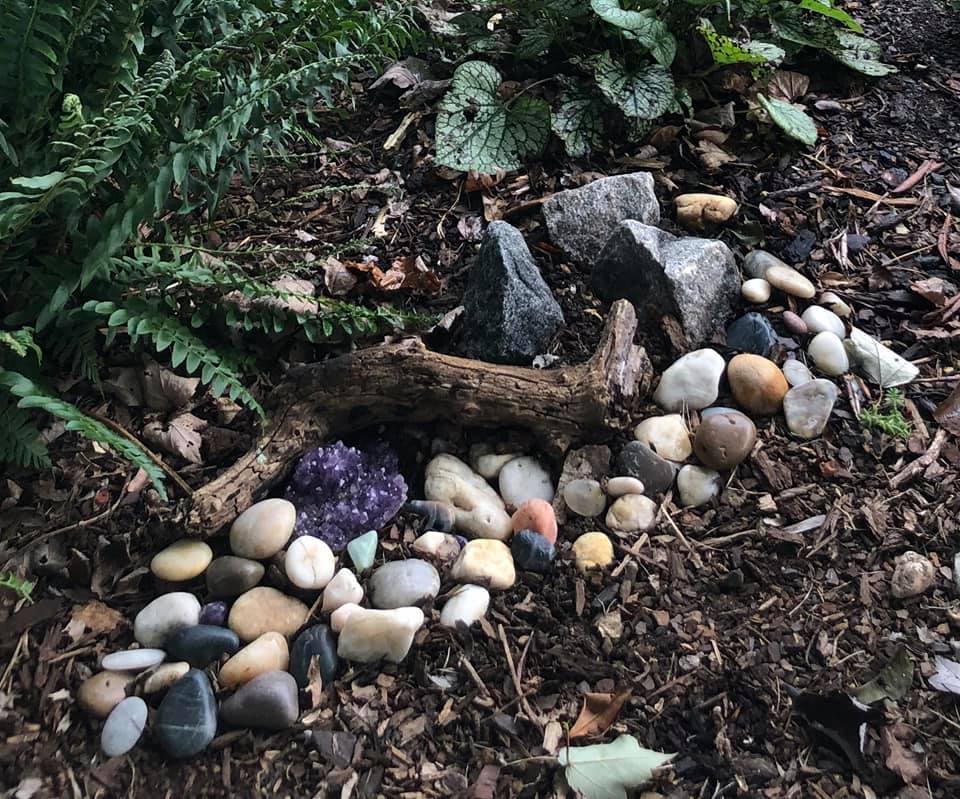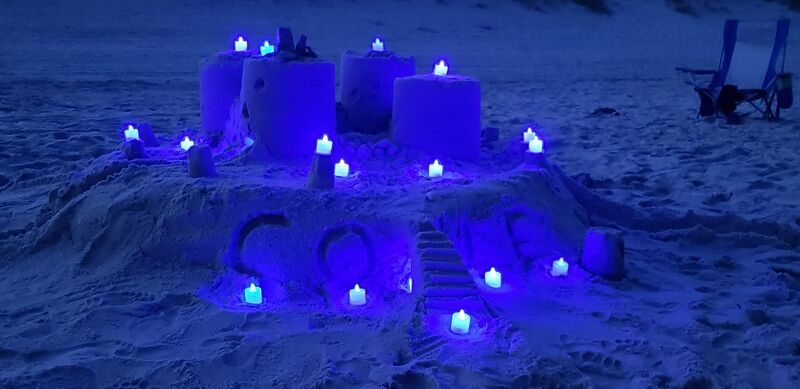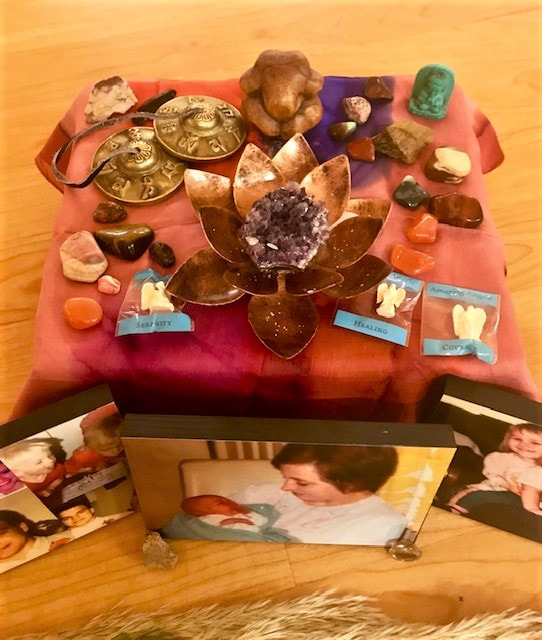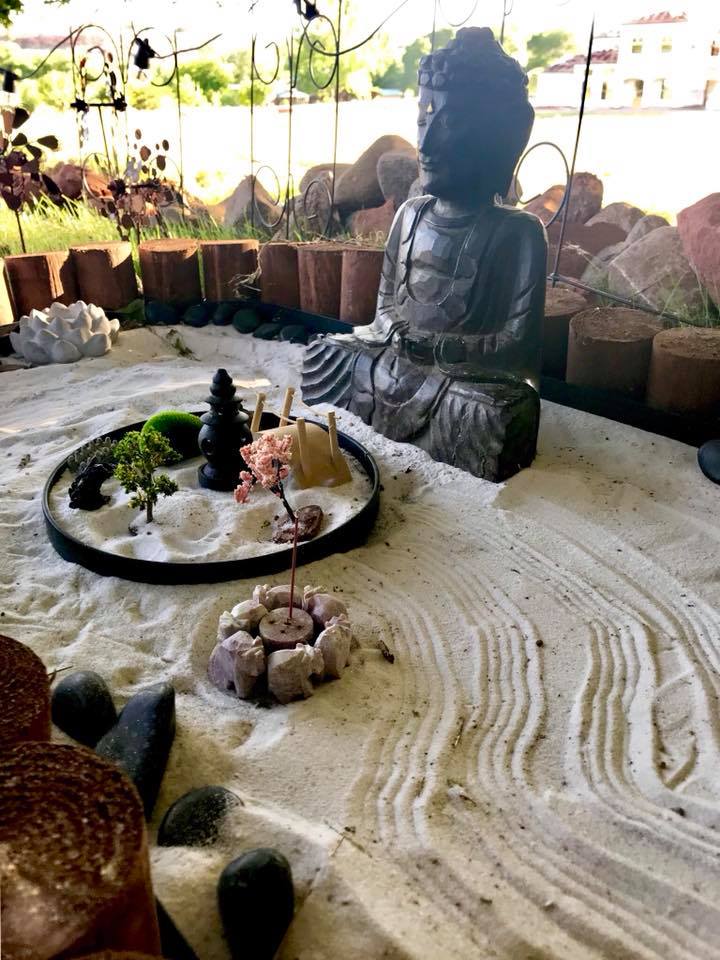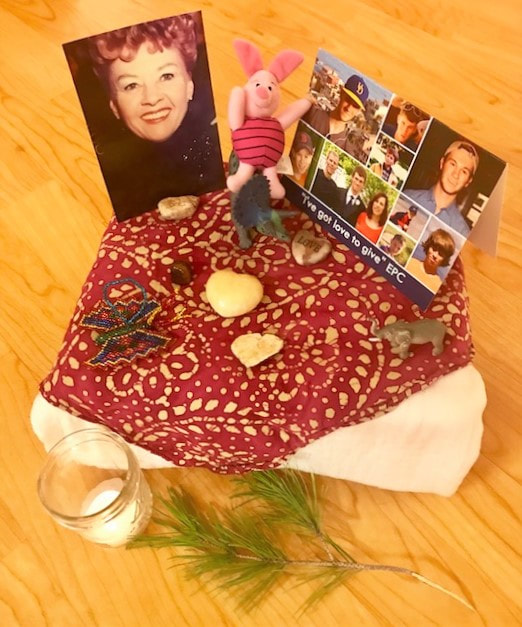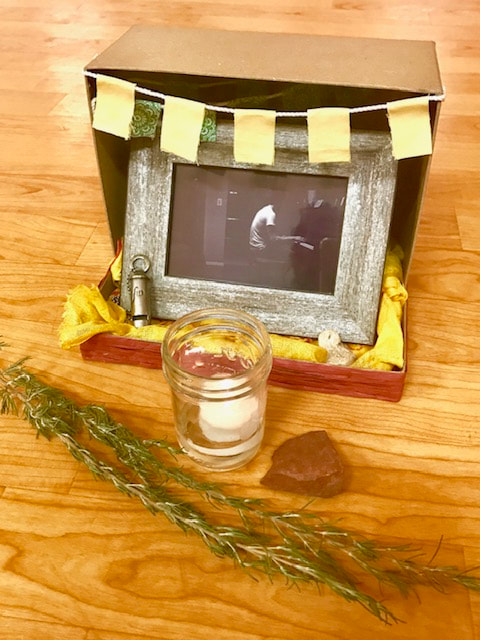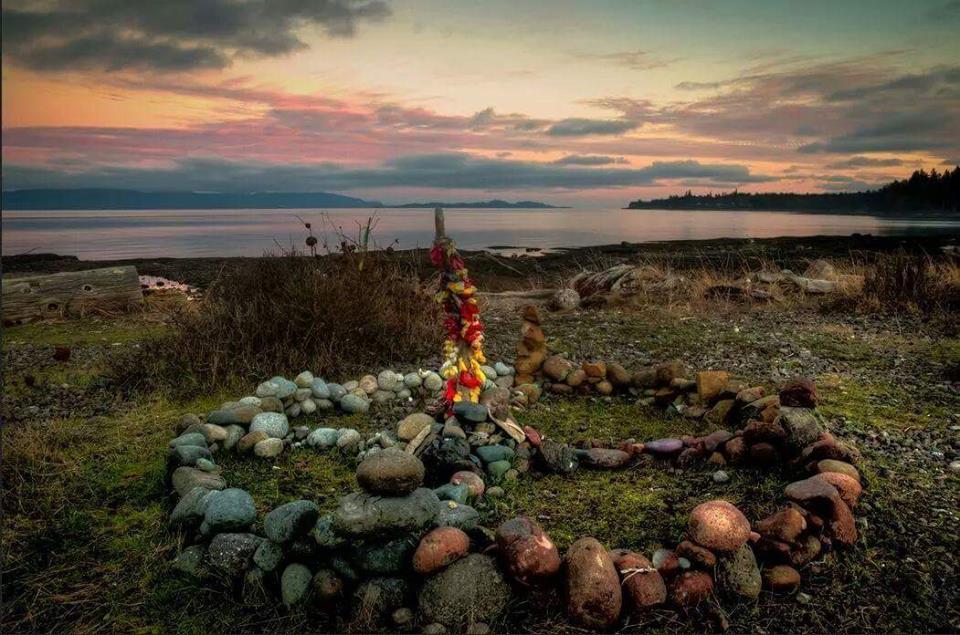- Meet Karla
- Free Guided Meditations
- Events & Workshops
- Get Your Free E-Book Breathing Lessons
- Work With Me
- Ketamine Assisted Psychotherapy (KAP)
- Reiki
- Tarot
- Chakras
- Yoga Nidra
- Mudra Practices to Support the Heart
- Frequently Asked Questions
- Just Breathe
- Altars and Shrines
- Tips & Articles
- Gift Certificates
- Press and News
- Blog: The Therapeutic Life
- The Mind in Grief
- Grounding
My Gift to You, Guided Yoga Nidra:
Journey to Encounter Your Ancestors
Creating Shrines and Altars
Archeologists have found evidence of shrines and altars, sacred creations, in virtually all places where humans have lived. Traditionally, shrines are memorials, or monuments, to the dead. People have created shrines for thousands of years and across all cultures. Some well-known shrines include the Taj Mahal and the Egyptian pyramids. Memorials such as the Martin Luther King Memorial, the Vietnam Veterans’ Memorial, the Mount Rushmore carvings, and the Lincoln Memorial are examples of secular shrines that honor the memories of our respected and revered dead.
People create shrines in public spaces and communities as well as in homes and in places of worship. Think of those we can see along the sides of roads and highways where someone died in a car crash. These spaces are sacred to the family and those who loved that person. Often the place where a person died is more important than a burial space. Public and community shrines may be created and added to spontaneously at sites of tragedies, such as those created by students, faculty and families at Columbine or Virginia Tech after the tragic shootings that took place in those schools or in neighborhoods where tragedies have taken place. Shrines may be created outside homes or at the burial sites of well-loved public figures or artists who have died such as those created in honor of John Lennon, Princess Diana, Jim Morrison and Edgar Allen Poe. Shrines certainly serve as places for solitude and reflection but can also be whimsical and celebratory like the brightly colored Day of the Dead shrines in Mexico’s annual festivities which celebrate and honor the lives of loved ones with parades, games, picnics and family gatherings.
An altar is generally considered a specific, sacred space used for worship, prayer, offerings or other religious and spiritual purposes. In religious traditions, the altar is usually the centerpiece of the worship space, such as in a church, synagogue, temple or mosque. Many people create home altars as a personal sacred space for prayer, reflection, or meditation. Home altars can help focus our minds on our chosen spiritual path and serve as daily reminders of a spiritual focus or our connection to Spirit.
Altars and shrines are external representations of interior mysteries. They are ways of showing in tangible form what is happening in our hearts and spirits. Creating shrines and altars gives us opportunity to remember, reflect and honor those we love who have died as well as transform pain through the creative act. The creation of a shrine can establish a permanent or a temporary place to which you can return to reflect, meditate, grieve, engage in a personal ritual, remember and honor the one who has died.
Often, the words altar and shrine are used interchangeably. You can use which ever term you prefer or you may wish to think of a personally created altar or shrine as a memorial, memory box, memory space, meditation place, honoring space, or simply a special place. It can be whatever you choose. The creation is a sacred, expressive act of love, a practice of the yogic Bhakti path. The finished piece ultimately helps us to center our feelings of devotion and love toward the focal points of the shrine. It helps us to enter into sacred space. Each time you light a candle or sit quietly focusing on the pictures or other sacred objects that are part of your creation, you are performing a Bhakti practice.
Portable shrines can be carried with you wherever you go. These might be as small as a matchbook that can fit in your pocket or something a bit larger, like the size of a book, for instance, that might be slipped into a purse or briefcase. A smaller, take-along shrine allows you to maintain connection with your loved one, or to have the means to create sacred space for remembering or engaging in a personal ritual any time or place you need or want to do so. You might prefer to create a semi-permanent shrine or altar whose elements can be taken apart and used in other places or spaces. Or you may wish to create a more permanent shrine or altar space that will be a focal point of room or outdoor space. The choices are yours.
Creating Your Shrine
There are no rules or guidelines for creating shrines. The beauty of creating a shrine is that the ideas and materials are seemingly endless and the process, like grieving, is completely individual. Before you plan the look of your shrine, you may want to spend some time thinking about your loved one, without thoughts or preconceived ideas of what you think your shrine will or should look like.
Here are some suggestions that may help the process:
To Create a Permanent Shrine
I always suggest that a container be decided on first before proceeding. The container may help guide the process or selection of items used in creating your shrine. If you know you want to build a more permanent shrine, even if it is a small one, be on the lookout for containers or objects that speak to you, or seem to call out to be re-purposed into your very own sacred space.
Some suggestions for containers which can be re-purposed as shrines:
Gather together your basic supplies:
Then, begin your process.
Prepare your surface by painting or covering the outside and then the inside of your container, allow it to dry completely. Using Gesso to prepare the surface can be helpful before adding color.
Add background papers or images on the prepared surface if you wish.
Place the photo(s) of your loved one where you think it should go.
Add embellishments, representations of the Divine, other meaningful objects and other elements as desired inside and out including beads, glass pieces, pebbles, shells, words, charms, etc., until you feel you have completed your shrine.
To Create a Semi-Permanent Shrine or Altar Space
You may choose to forgo the paints, glues and embellishments. To create a semi-permanent shrine, decide on your location or designate a particular space, such as a table top or a special shelf. You may want to visit thrift and antique shops to find the perfect small table or shelf that will serve as the base for your home altar/shrine. Once you’ve found your base, begin the assembling of your sacred space.
Gather together meaningful items that will help you focus on your love as well as your intent to memorialize, remember, and honor. You may wish to cover your altar with a special cloth or decorative mat. Next, you may want to place a picture of your beloved in a special frame as the centerpiece of your shrine. Add to this basic memorial anything you wish.
Some suggestions might include:
Temporary Nature Shrines
You may also choose to create a completely temporary shrine in nature—in the woods, a park or in your own back yard. Choose a space outdoors, a flat rock, an appealing open space on the ground, a nook of a tree, any outdoor space you find pleasing and where you are not disturbing existing animal homes or harming any natural life. Place stones, shells, flowers or other natural objects in pleasing arrangements in your chosen space. You may want to create a cairn with stacked stones, or a medicine wheel with pebbles, sticks and seashells. (See Fig 3.3) You may choose to leave bird seed, nuts or bits of fruit as offerings to nature. After you construct your outdoor sacred space, sit for as long as you wish to pray, chant, meditate or speak to your beloved. You can choose to leave the sacred configuration of natural items as they are or disassemble the space when you leave.
Excerpt from Karla's book, Yoga for Grief and Loss: Poses Meditations, Devotion, Self Reflection, Selfless Acts, Ritual
People create shrines in public spaces and communities as well as in homes and in places of worship. Think of those we can see along the sides of roads and highways where someone died in a car crash. These spaces are sacred to the family and those who loved that person. Often the place where a person died is more important than a burial space. Public and community shrines may be created and added to spontaneously at sites of tragedies, such as those created by students, faculty and families at Columbine or Virginia Tech after the tragic shootings that took place in those schools or in neighborhoods where tragedies have taken place. Shrines may be created outside homes or at the burial sites of well-loved public figures or artists who have died such as those created in honor of John Lennon, Princess Diana, Jim Morrison and Edgar Allen Poe. Shrines certainly serve as places for solitude and reflection but can also be whimsical and celebratory like the brightly colored Day of the Dead shrines in Mexico’s annual festivities which celebrate and honor the lives of loved ones with parades, games, picnics and family gatherings.
An altar is generally considered a specific, sacred space used for worship, prayer, offerings or other religious and spiritual purposes. In religious traditions, the altar is usually the centerpiece of the worship space, such as in a church, synagogue, temple or mosque. Many people create home altars as a personal sacred space for prayer, reflection, or meditation. Home altars can help focus our minds on our chosen spiritual path and serve as daily reminders of a spiritual focus or our connection to Spirit.
Altars and shrines are external representations of interior mysteries. They are ways of showing in tangible form what is happening in our hearts and spirits. Creating shrines and altars gives us opportunity to remember, reflect and honor those we love who have died as well as transform pain through the creative act. The creation of a shrine can establish a permanent or a temporary place to which you can return to reflect, meditate, grieve, engage in a personal ritual, remember and honor the one who has died.
Often, the words altar and shrine are used interchangeably. You can use which ever term you prefer or you may wish to think of a personally created altar or shrine as a memorial, memory box, memory space, meditation place, honoring space, or simply a special place. It can be whatever you choose. The creation is a sacred, expressive act of love, a practice of the yogic Bhakti path. The finished piece ultimately helps us to center our feelings of devotion and love toward the focal points of the shrine. It helps us to enter into sacred space. Each time you light a candle or sit quietly focusing on the pictures or other sacred objects that are part of your creation, you are performing a Bhakti practice.
Portable shrines can be carried with you wherever you go. These might be as small as a matchbook that can fit in your pocket or something a bit larger, like the size of a book, for instance, that might be slipped into a purse or briefcase. A smaller, take-along shrine allows you to maintain connection with your loved one, or to have the means to create sacred space for remembering or engaging in a personal ritual any time or place you need or want to do so. You might prefer to create a semi-permanent shrine or altar whose elements can be taken apart and used in other places or spaces. Or you may wish to create a more permanent shrine or altar space that will be a focal point of room or outdoor space. The choices are yours.
Creating Your Shrine
There are no rules or guidelines for creating shrines. The beauty of creating a shrine is that the ideas and materials are seemingly endless and the process, like grieving, is completely individual. Before you plan the look of your shrine, you may want to spend some time thinking about your loved one, without thoughts or preconceived ideas of what you think your shrine will or should look like.
Here are some suggestions that may help the process:
- Make a list of words that come to mind when you think of your loved one.
- Make a list of objects or things that you associate with your loved one.
- Write down any words of wisdom, favorite expressions, funny or loving things your beloved may have said.
- Write down nicknames or pet names you might have used for each other and write down any associations those words may bring up.
- Write down his or her favorite colors, flowers, foods, hobbies, talents, etc.
- Research and find images that correspond to some of the things you have listed. You may find lots of interesting images on the internet that you can print and cut out for use in your creation. The images you encounter may spark other thoughts or ideas that you may wish to incorporate in your memorial shrine.
To Create a Permanent Shrine
I always suggest that a container be decided on first before proceeding. The container may help guide the process or selection of items used in creating your shrine. If you know you want to build a more permanent shrine, even if it is a small one, be on the lookout for containers or objects that speak to you, or seem to call out to be re-purposed into your very own sacred space.
Some suggestions for containers which can be re-purposed as shrines:
- Altoid tins (or other candy or gum tins)
- Sliding matchboxes
- Jewelry boxes
- Gift boxes
- Shoe boxes
- Deep frames or shadow boxes
- Drawers
- Books (you can make a book into a box by cutting a rectangular shape into the pages and then gluing the pages together to create a container inside the book)
- Small pieces of furniture like stools, small cabinets, side tables or plant stands
Gather together your basic supplies:
- Scissors
- Glue (I prefer acrylic gel medium)
- Paints (acrylic craft paints are inexpensive and work very well for this purpose)
- Decorative and/or colored papers
- Photographs, personal objects or other items related to your loved one
- Anything else that you wish to add to your creation, such as ribbons, wires, sticks, dried flowers, string, yarn, decorative paper, wrapping paper, rhinestones, shells, small mirrors, glitter, charms, or beads
Then, begin your process.
Prepare your surface by painting or covering the outside and then the inside of your container, allow it to dry completely. Using Gesso to prepare the surface can be helpful before adding color.
Add background papers or images on the prepared surface if you wish.
Place the photo(s) of your loved one where you think it should go.
Add embellishments, representations of the Divine, other meaningful objects and other elements as desired inside and out including beads, glass pieces, pebbles, shells, words, charms, etc., until you feel you have completed your shrine.
To Create a Semi-Permanent Shrine or Altar Space
You may choose to forgo the paints, glues and embellishments. To create a semi-permanent shrine, decide on your location or designate a particular space, such as a table top or a special shelf. You may want to visit thrift and antique shops to find the perfect small table or shelf that will serve as the base for your home altar/shrine. Once you’ve found your base, begin the assembling of your sacred space.
Gather together meaningful items that will help you focus on your love as well as your intent to memorialize, remember, and honor. You may wish to cover your altar with a special cloth or decorative mat. Next, you may want to place a picture of your beloved in a special frame as the centerpiece of your shrine. Add to this basic memorial anything you wish.
Some suggestions might include:
- Personal objects that remind you of, or are connected to, your beloved. These might include jewelry, letters or cards he or she gave you, awards, trophies, hats, and other items of clothing, favorite books, something he or she used on a regular basis such as sewing scissors, razor, comb or brush.
- Photos or other representations of a chosen deity, these may be statues, photos, icons.
- Natural objects such as flowers, fruits, rocks, crystals, shells, sticks or branches from your back yard, pinecones, leaves, abandoned birds’ nests, etc.
- Candles, incense
- Chimes or bells
Temporary Nature Shrines
You may also choose to create a completely temporary shrine in nature—in the woods, a park or in your own back yard. Choose a space outdoors, a flat rock, an appealing open space on the ground, a nook of a tree, any outdoor space you find pleasing and where you are not disturbing existing animal homes or harming any natural life. Place stones, shells, flowers or other natural objects in pleasing arrangements in your chosen space. You may want to create a cairn with stacked stones, or a medicine wheel with pebbles, sticks and seashells. (See Fig 3.3) You may choose to leave bird seed, nuts or bits of fruit as offerings to nature. After you construct your outdoor sacred space, sit for as long as you wish to pray, chant, meditate or speak to your beloved. You can choose to leave the sacred configuration of natural items as they are or disassemble the space when you leave.
Excerpt from Karla's book, Yoga for Grief and Loss: Poses Meditations, Devotion, Self Reflection, Selfless Acts, Ritual
Here are several examples of permanent shrines, temporary shrines, and nature shrines. All photos are shared with permission from the creators. Thank you parents of Cheyenne, Gidi, Ethan, Jake, Cole, Phillip, Reagan and sister of Zack, XOXO
© Karla Helbert, MS, LPC All Rights Reserved
- Meet Karla
- Free Guided Meditations
- Events & Workshops
- Get Your Free E-Book Breathing Lessons
- Work With Me
- Ketamine Assisted Psychotherapy (KAP)
- Reiki
- Tarot
- Chakras
- Yoga Nidra
- Mudra Practices to Support the Heart
- Frequently Asked Questions
- Just Breathe
- Altars and Shrines
- Tips & Articles
- Gift Certificates
- Press and News
- Blog: The Therapeutic Life
- The Mind in Grief
- Grounding

